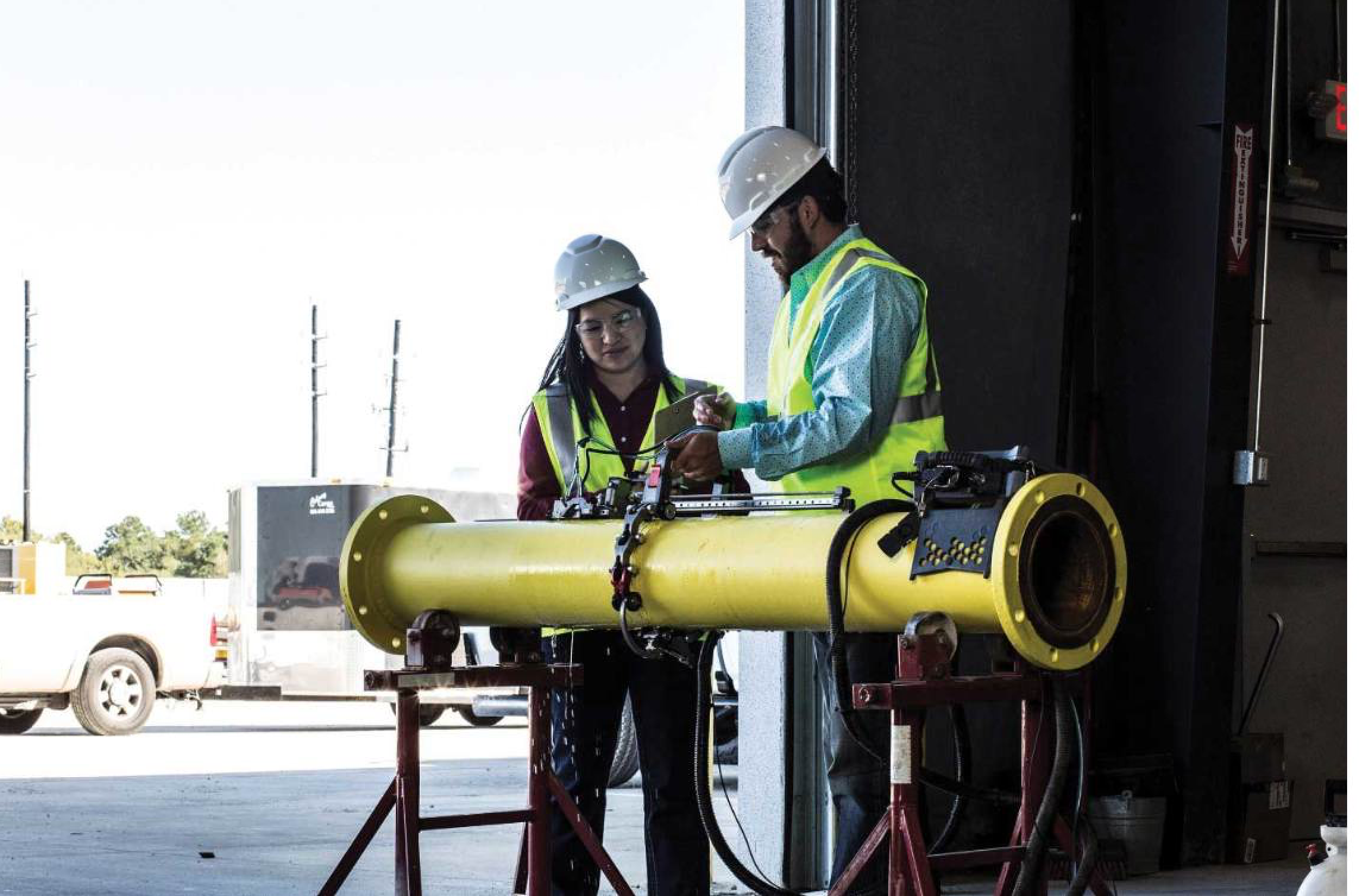January 2018, Vol. 245, No. 1
Features
PRCI Tech Center Busy with Detection Research

The Technology Development Center (TDC) in Houston continued to experience a high level of activity in the third quarter. Ongoing research at the center consists of both PRCI-funded research and development (R&D) projects and member-funded work through joint industry initiatives or independent work.
Ongoing PRCI-funded research include the following projects:
Evaluation of ILI systems for detecting metal loss, cracks and gouges in geometric anomalies (MD-1-13) – Testing has begun on the two 24-inch pull test strings using the winch. Two inline inspection tools have been pulled, with plans for two more tools to be run in January. The results of this study will provide operators with an improved understanding of inline inspection (ILI) systems capabilities to detect and discriminate complex mechanical damage features. This will help direct further research on ILI technologies and facilitate improved assessment methods and algorithms.
Assessment of non-destructive evaluation (NDE) tools for difficult-to-inspect pipes (NDE-1-7) – Testing in the 6-inch test loop has been successfully completed, and the results are under review by the technology providers. The loop provided the project with a variety of flow constrictions and piping configuration that mimic unpiggable piping.
Assessment of difficult-to-inspect pipelines evaluating select areas using high-resolution NDE (NDE-3-2) – The technology used the same setup to complete similar testing. This research will help operators manage difficult-to-inspect pipelines by providing quantitative performance evaluation of smart pigging and other NDE tools.
Development of a PRCI ILI performance test loop for liquid-coupled technologies (NDE-4-2) – The construction and commissioning of the 12-inch liquid test loop is completed. Initially it has been used to conduct testing for the ERW seam weld assessment (IM-3-1) project by incorporating the ERW pipe samples into the loop design. More testing took place in December. This facility tests the performance of liquid-coupled ILI tools to detect and discriminate integrity threats, both in onshore and offshore applications.
Validation of in-ditch material characterization equipment and techniques (NDE-4-8) – The TDC provided the pipe samples and testing space necessary for contractors to demonstrate and validate the in-situ pipe strength and toughness estimation tools and techniques, using standard field metallurgical equipment.
PRCI member companies continue to employ the TDC to execute research projects and conduct meetings specific to their interests. Member-funded research at the TDC allows for a quick response to industry challenges or operational conditions that are unique to a given operator.
At the pull-test facility, PRCI completed repeated ILI pull tests on a 42-inch pipe string. This testing achieved the largest diameter ILI pulls completed in North America.
PRCI also completed multiple liquid ILI tests using water in a 20-inch test string. The pipe string was over 350 feet and required the fabrication of custom launching-and-receiving test headers to accommodate the tool’s size. PRCI contracted with a third-party contractor to provide the pumping capability for testing.
PRCI Adopts 2018 Research Program
In related news, at its fall Executive Assembly meeting PRCI approved the final slate of projects for its 2018 Research Portfolio. Member-funding contributions of nearly $10 million and numerous in-kind support commitments were allocated to research activities including projects addressing leak detection, pipeline operations & integrity, corrosion prevention & control, design, materials, construction, underground storage, and pipeline facilities.
New was the implementation of the Research Bank, which provides members with increased flexibility to fund important research out-of-cycle as opportunities arise. Members traditionally were limited to voting their subscription dollars on an annual basis via the ballot, but now have the opportunity to “reserve” those dollars to spend at their discretion on other research priorities or those that may not have been represented on the ballot.
“Members committed over $1.5 million to the Research Bank and within two months of the closing of the ballot we have already seen opportunities arise to solicit its use,” PRCI announced.
The 2018 ballot was the 13th annual ballot through which members allocated funds and resources directly to research of importance to their operations and business drivers, as well as to meet key industry needs. This ballot featured projects addressing the following topics, many of which are aimed squarely at enhancing operators’ ability to ensure pipeline safety and integrity:
- Continuing work on ILI and NDE technologies to fully characterize challenging and diffuse features.
- Optimizing cathodic protection methods and practices.
- Leak-detection technologies for a variety of scenarios, using multiple approaches and platforms.
- Right-of-way monitoring and design & construction practices that mitigate geohazards.
- Welding practices for dissimilar steels and changing steel chemistries.
- Continuing improvements to pipeline assessment and repair practices and capabilities.
- Characterization of flow-induced vibration on storage cavern brine strings.
- Standard and alternative thermos-well design options.
- Gas contaminant analyzer performance and static mixer performance capabilities.
- A gas transmission-optimized NO-2 modeling capability.
- Improved mechanical reliability, reduced O&M costs and optimized emissions performance of gas transmission engines, including under variable fuel gas chemistries.





Comments